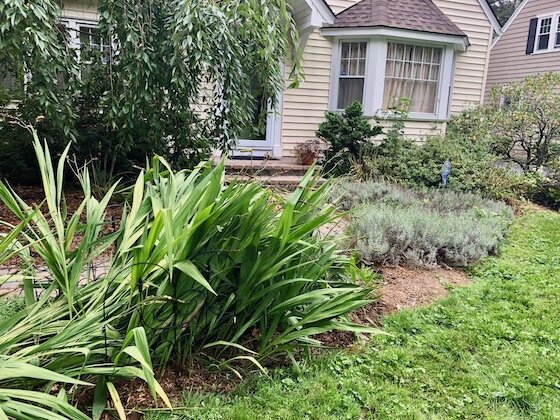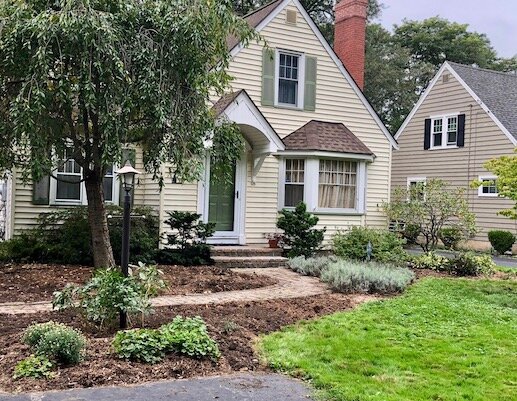When In Doubt, Subtract: Plants That Is!
It's easy for things to get out of hand in a garden. Maybe you didn't plan it out well enough, bought plants that weren't appropriate for the area, squeezed in too many or made the beds too big. Now you've got a hot mess on your hands and you're not having fun. Sound familiar? Whether you're a novice or an experienced gardener, most of us have run into this situation at one time or another. Obviously you have to do something, but the hard part is figuring out where to start.
Recently, I got a call from a woman who wanted help redesigning her front gardens. She described herself as an avid gardener, but felt overwhelmed by the maintenance. She said, "it looks like the garden fairy threw up out there and it has become too much for me to manage". You can see from the photo below that it's a mishmash of things - two pretty large azaleas, a large weeping cherry that is too big for the space, crocosmia, daylilies, black-eyed susans, etc.
When I saw it, I had to agree. The tree and shrubs could be pruned to fit their space but the perennials were another story. There was way too much going on. By that, I mean many different kinds of plants scattered about in a small space. It looked messy and was difficult to take care of.
The owner wanted the front entrance to look attractive and be easier to maintain.The solution? Simplify and subtract. That massive planting of lavender was the best looking thing in this planting. I suggested that we stop the bed there.
We dug out the crocosmia and reduced the size of the bed. Grass will be planted in the bare area. For now, the peony by the mailbox and perennial geraniums can stay put. Underneath the weeping cherry, existing perennials were struggling and there weren't enough of one variety to group them together. We took them out and will either relocate or give them away. We'll plant something along the lines of what you see below - groups of large hostas and one type of groundcover. I suggested Geranium 'Biokovo' (the pink flowering plant below). It grows fast,has pretty flowers and the foliage always looks good. Best of all, it does a great job supressing the weeds.
Here's what the beds looked like after we cleared them out, awaiting seeding of grass and planting underneath the tree. It looks neater and will be easier to take care of.
This was a simple fix, but it illustrates a few points that will help you get started on a garden renovation of any size. If you have a big project, try doing it in stages.
Reduce size of beds
Limit variety of plants
Group same varieties in large masses (at least 5 or more together)
Choose suitable plants for your beds. Perennials with floppy foliage, like crocosmia don't work as edging plants and they don't look good when you see them up close. Such types look better massed in bigger beds with other perennials large enough to support them.
When in doubt, subtract and consolidate the plants you already have before you get carried away with buying more!





